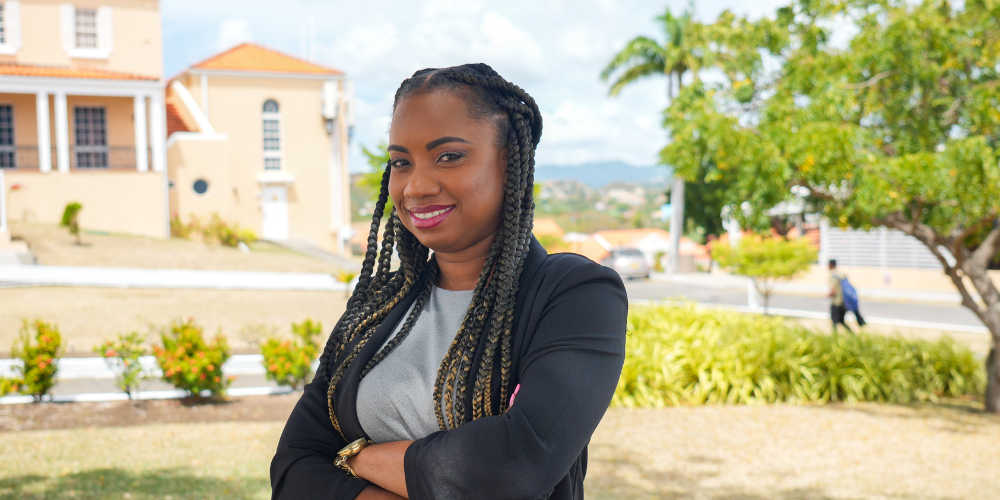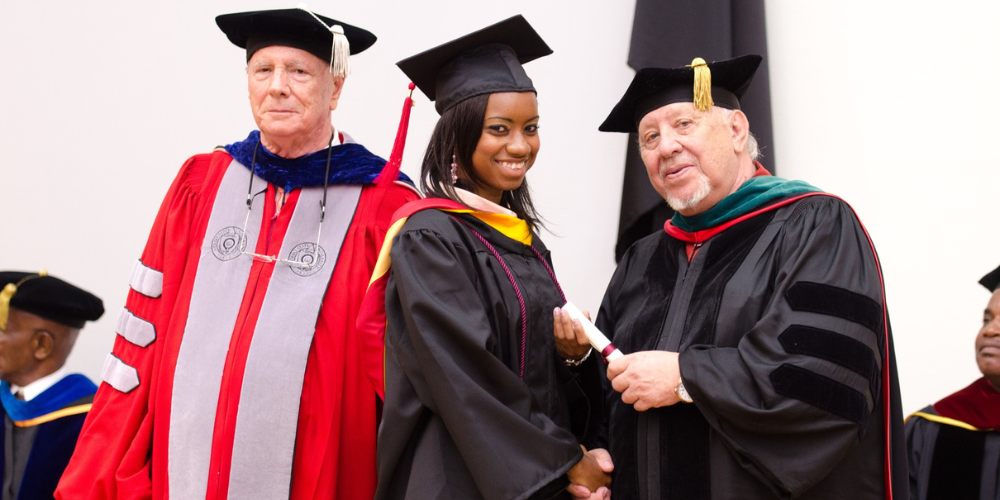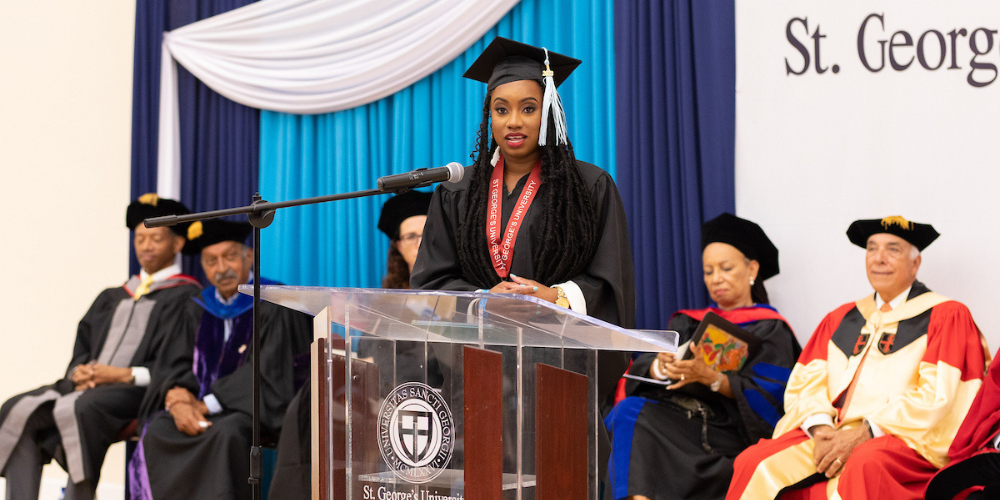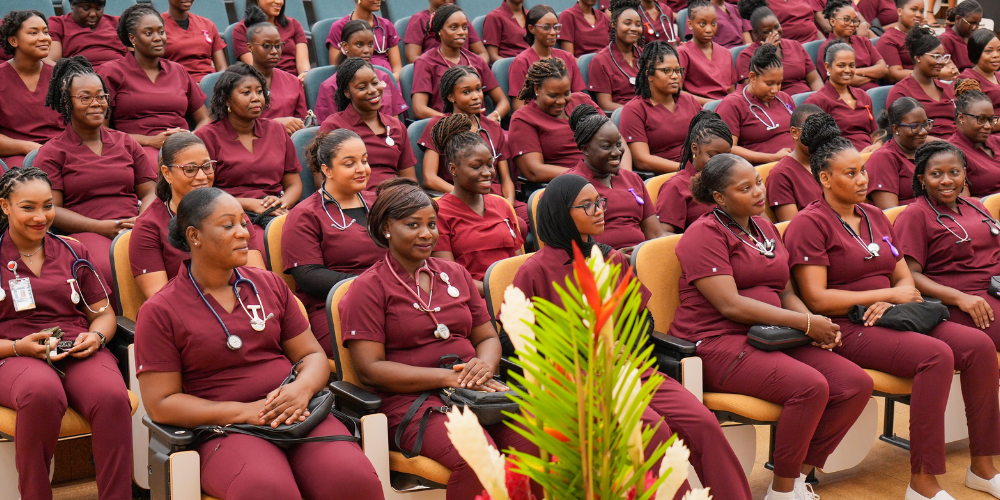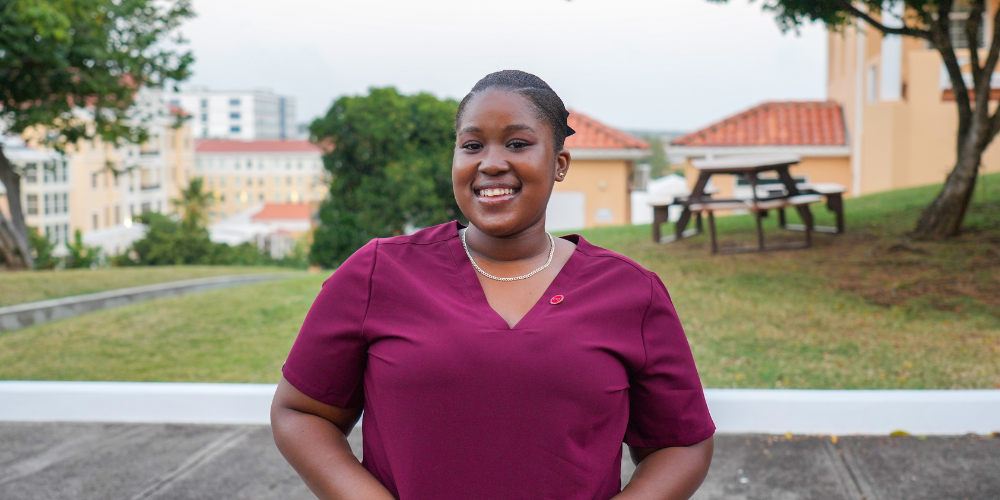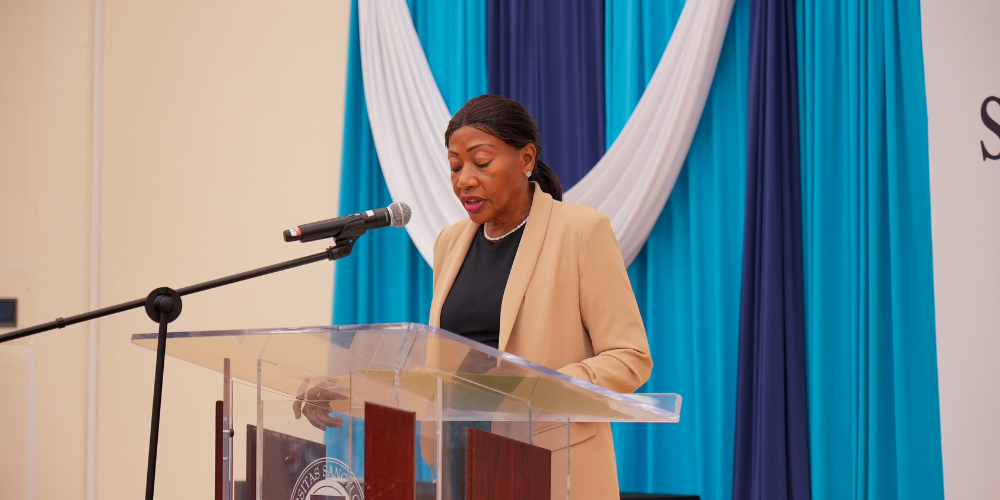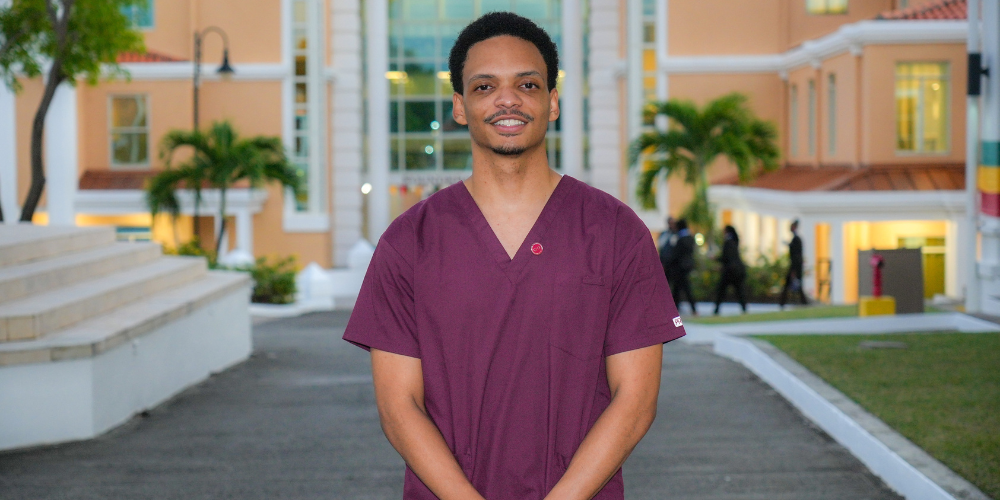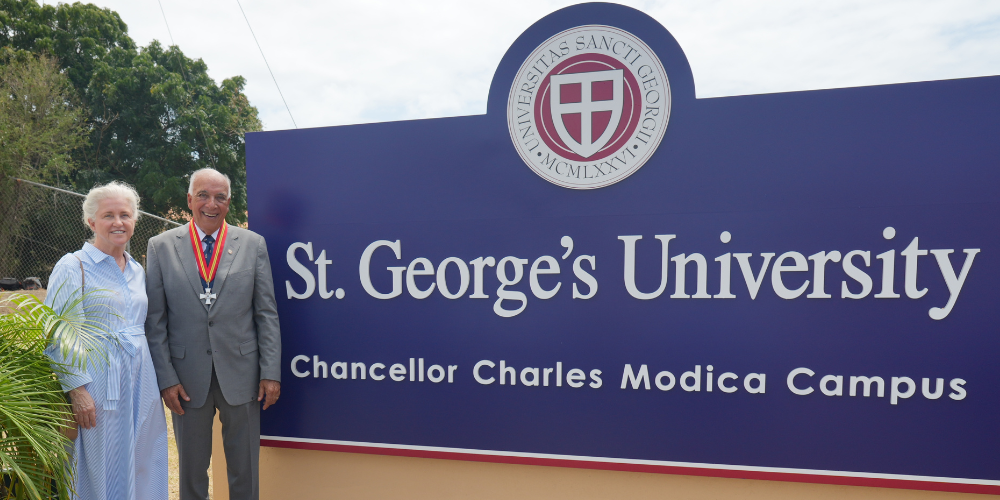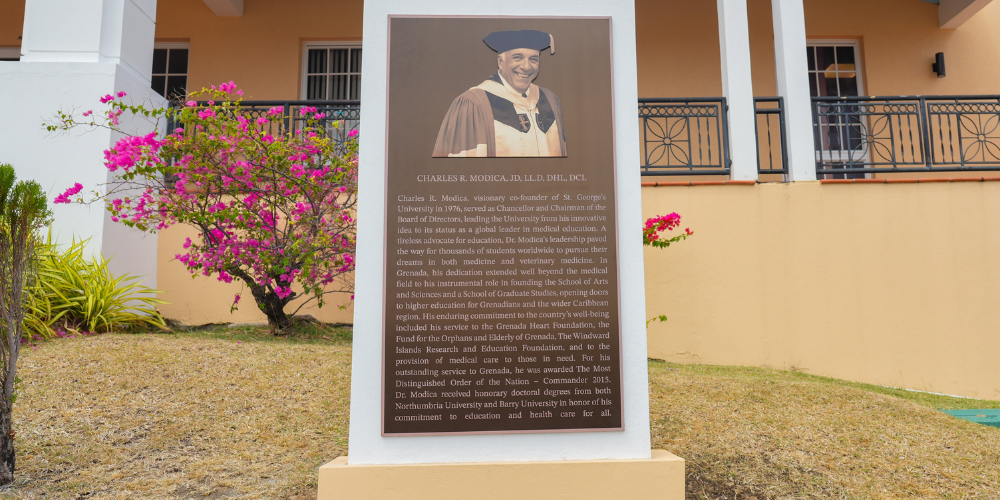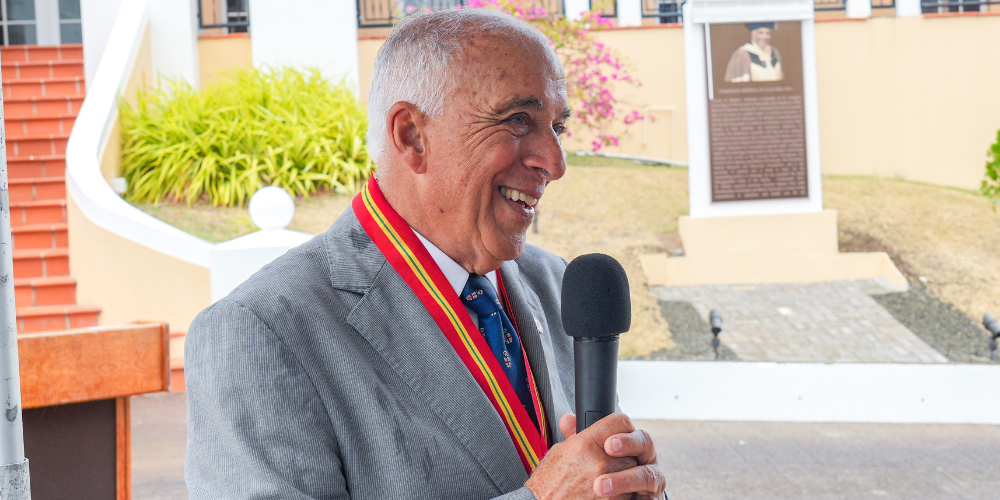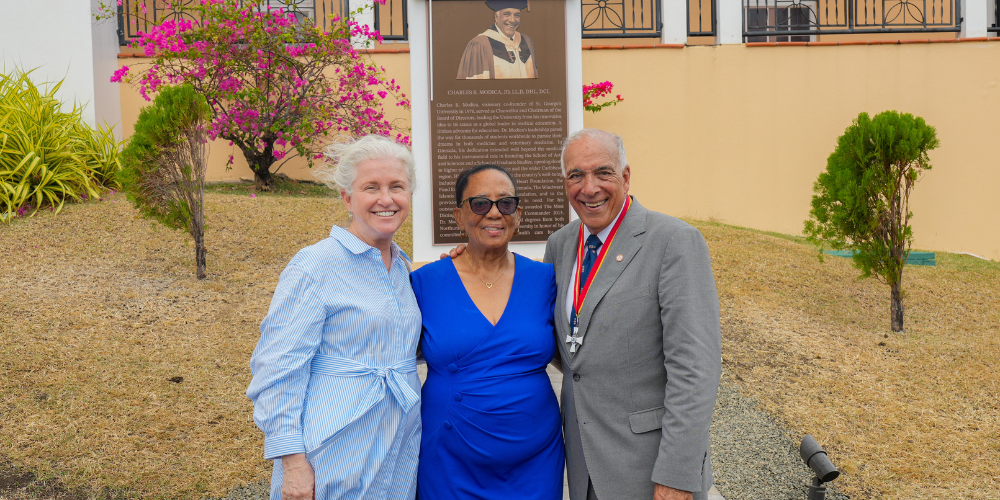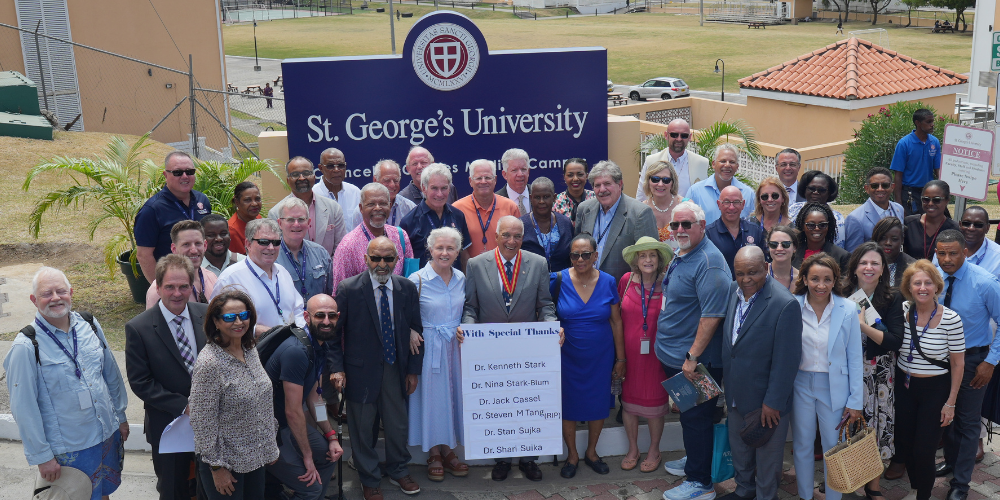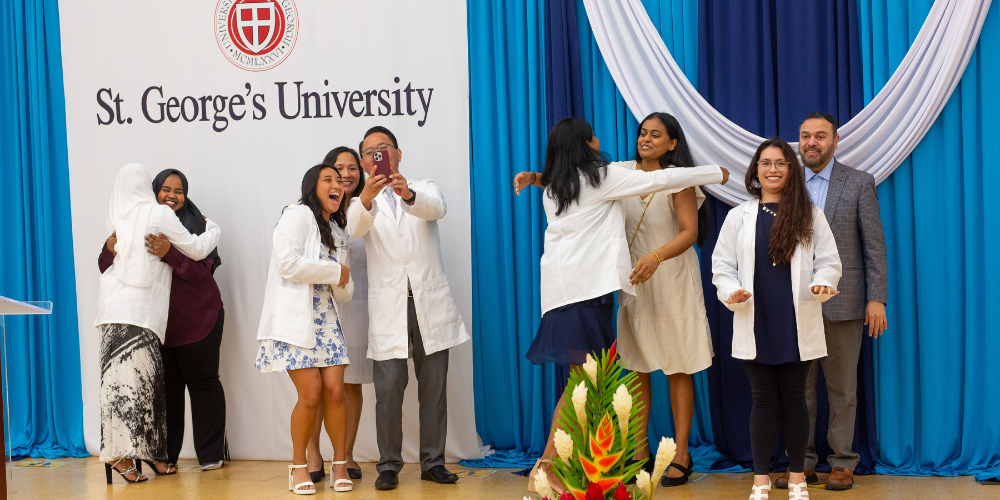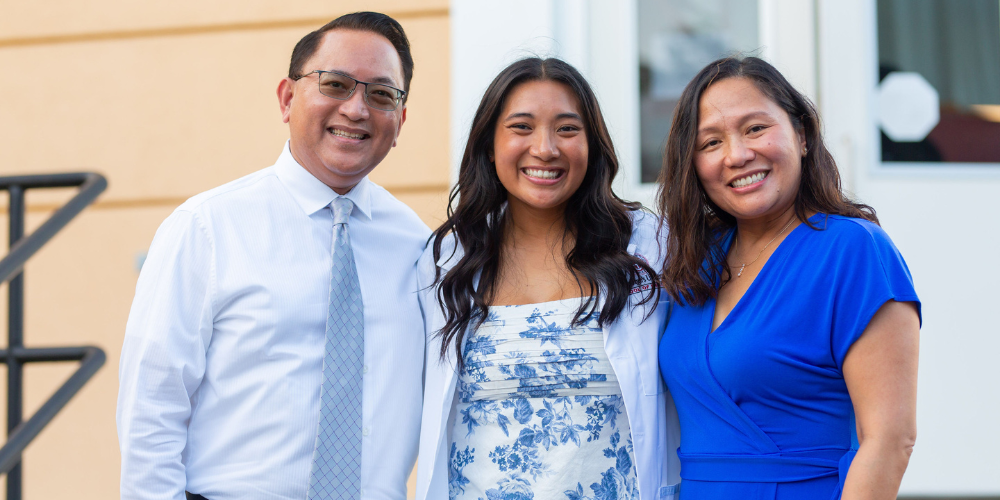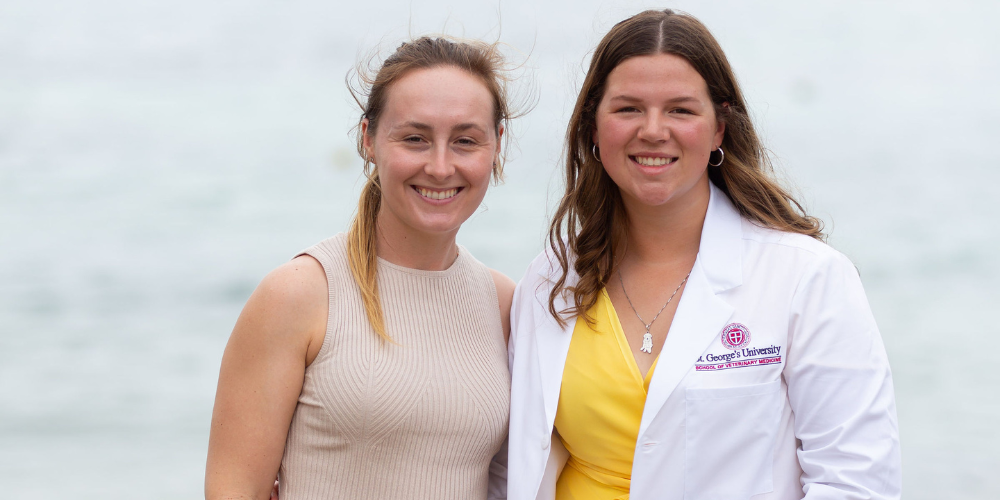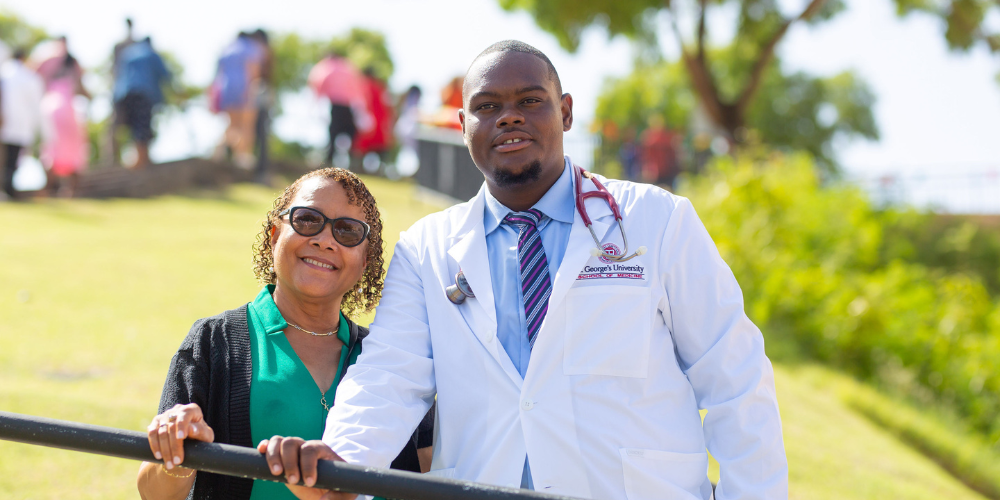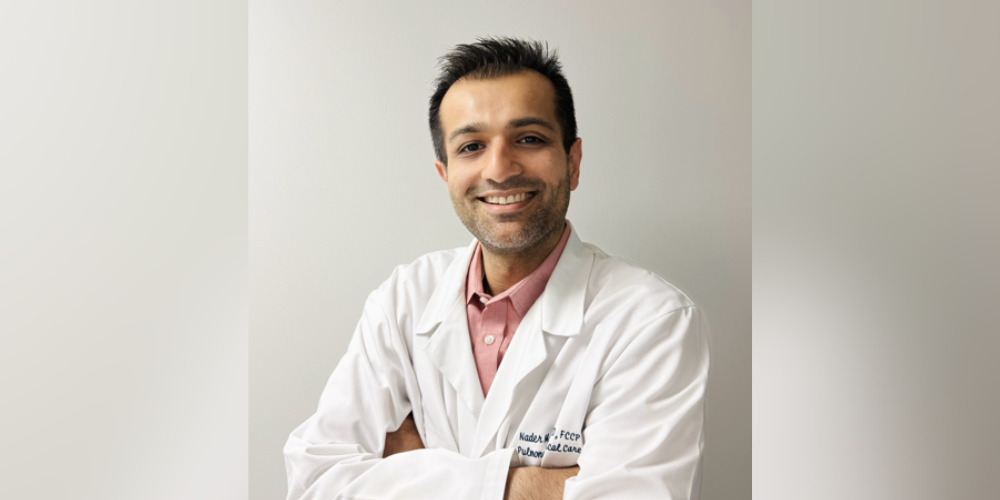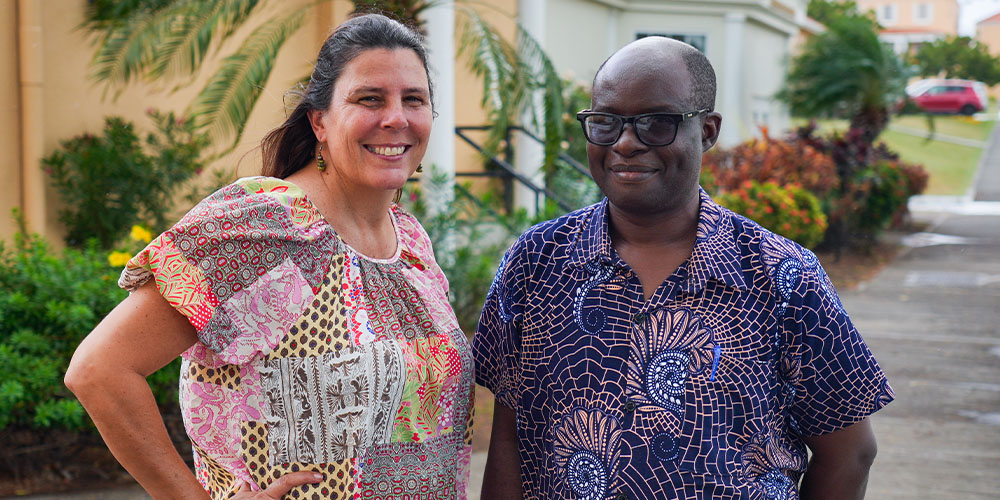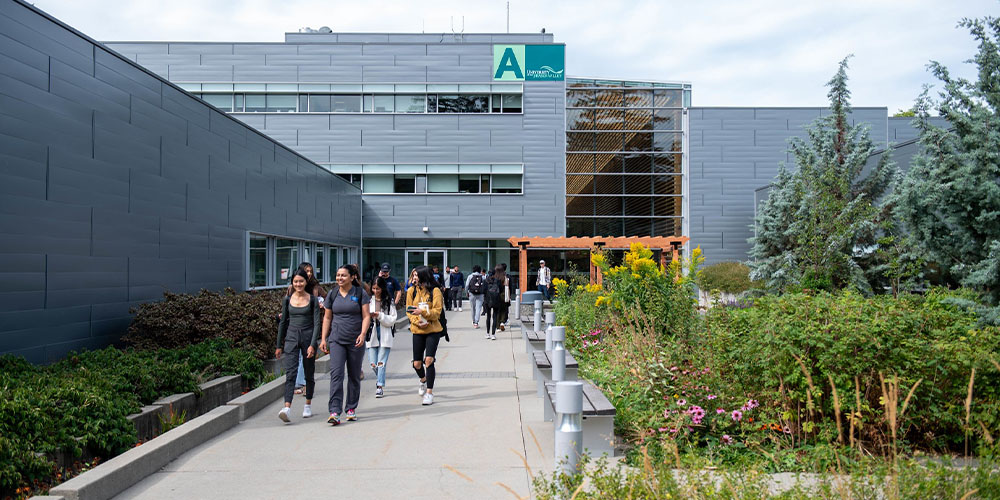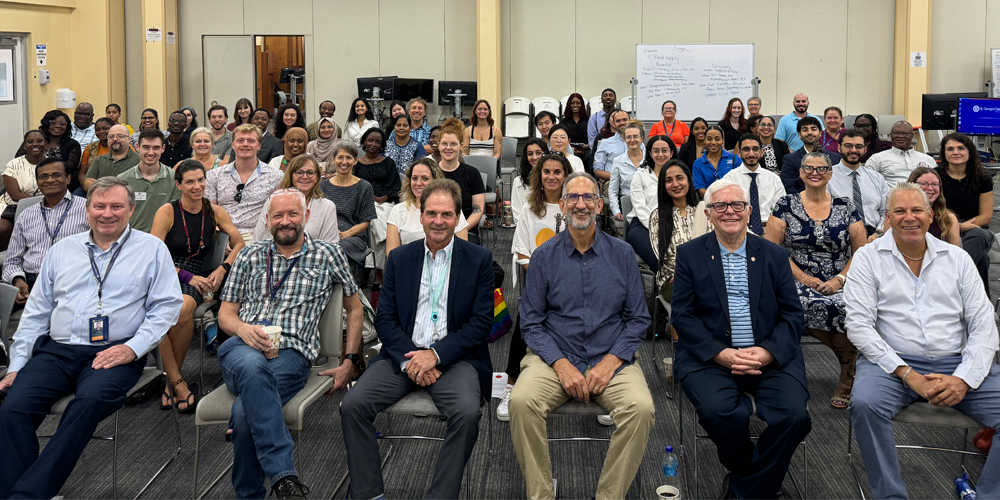VIRMP 2025: 37 SGU Veterinary Students + Alumni Secure Competitive Residencies and Internships
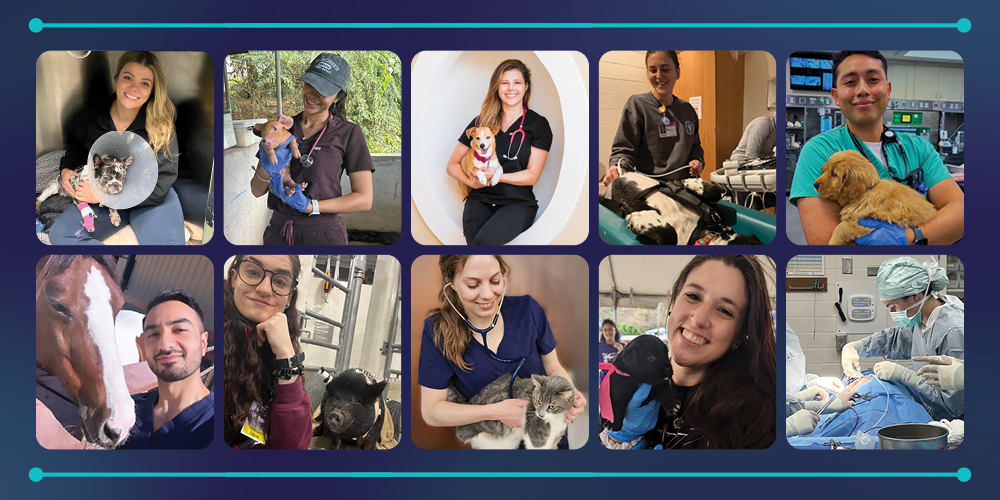
Thirty-seven students and graduates of St. George’s University School of Veterinary Medicine secured competitive veterinary internship and residency positions within the 2025 Veterinary Internship & Residency Matching Program (VIRMP).
SGU-trained veterinarians achieved a match rate of 67.2 percent, above the match rate of 48.7 percent for all veterinary schools—including those in the US, according to data released by the VIRMP, a program sponsored by the American Association of Veterinary Clinicians (AAVC).
“Congratulations to all who matched in this year’s VIRMP,” said Dr. Neil Olson, dean of the School of Veterinary Medicine. “This achievement is a testament to your commitment to the veterinary profession and passion for advancing animal healthcare. I hope these opportunities continue to inspire you to learn and grow, making SGU proud along the way.”
Beginning in June, the veterinarians will begin their specialized training in areas such as:
- small animal internal medicine,
- emergency and critical care,
- small and large animal surgery,
- dermatology,
- oncology,
- zoological companion animal,
- diagnostic imaging, and more.
These positions are situated at prestigious institutions within the SVM’s network of clinical affiliates as well as specialty hospitals across the US.
“The dedication and hard work that our students invest in turning their dreams into reality are clearly reflected in the competitive internships and residencies they secured,” said Dr. Tara Paterson, associate dean within SVM’s Office of Year Four Clinical Training and a 2003 SGU graduate. “We couldn’t be prouder of their hard work and commitment to excellence.”
Students shared their reactions to learning they matched and their advice for future veterinarians.
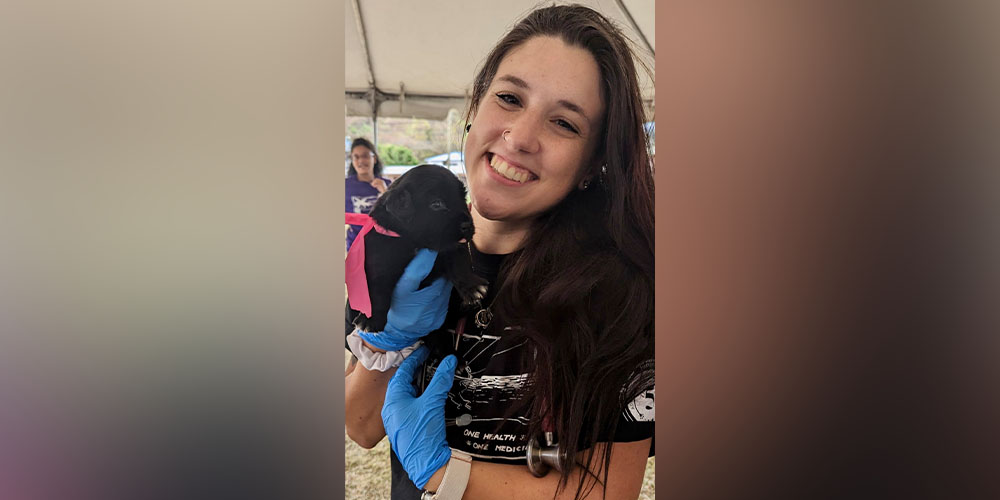
Kristi Cerami, DVM ’25 (expected)
Kristi Cerami, DVM ’25 (expected)
Matched: Small animal rotating internship, Veterinary Emergency & Referral Group (VERG), Brooklyn NY
Hometown: Long Island, NY
Where are you now? Clinical year at the University of Tennessee
What was your reaction to learning that you Matched? I was ecstatic and so grateful to have been chosen by VERG! From the moment I interviewed, I had such a great feeling about the practice and the rapport felt so genuine. I can’t wait to start my internship!
How does the internship further your career goals? I plan on specializing in small animal surgery. The rotating internship is the next step to reaching that goal, then onto a surgical internship and residency.
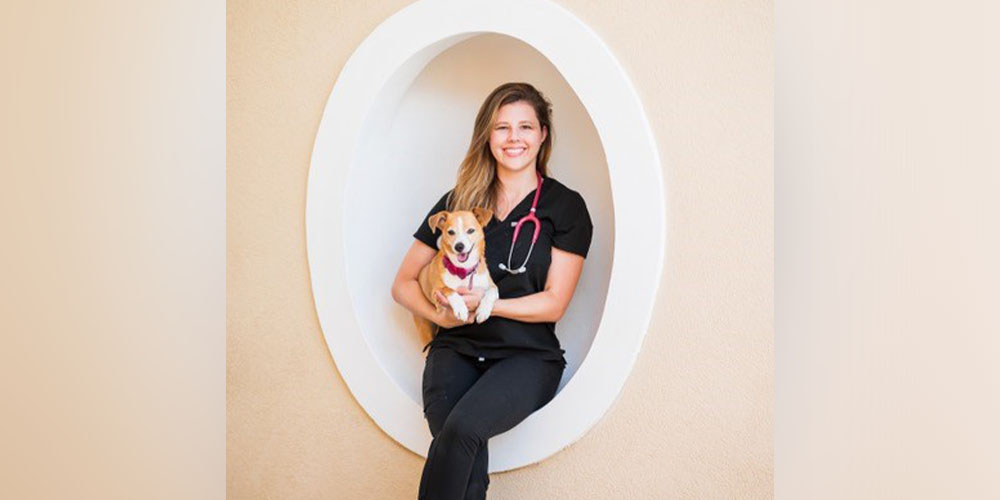
Marissa Peck, DVM ’25 (expected)
Marissa Peck, DVM ’25 (expected)
Matched: Small animal medicine and surgery rotating internship, Hope Advanced Veterinary Hospital, Vienna, VA
Hometown: Shelton, CT
Where are you now? Clinical year at Texas A&M University
What was your reaction to learning that you Matched? I was very excited to hear that I was matched because my long-term goal is to be a veterinary cardiologist, and they have three full-time and four part-time cardiologists.
How will the internship further your career goals? I’m hoping I can use this internship as a stepping stone to acquire a residency position.
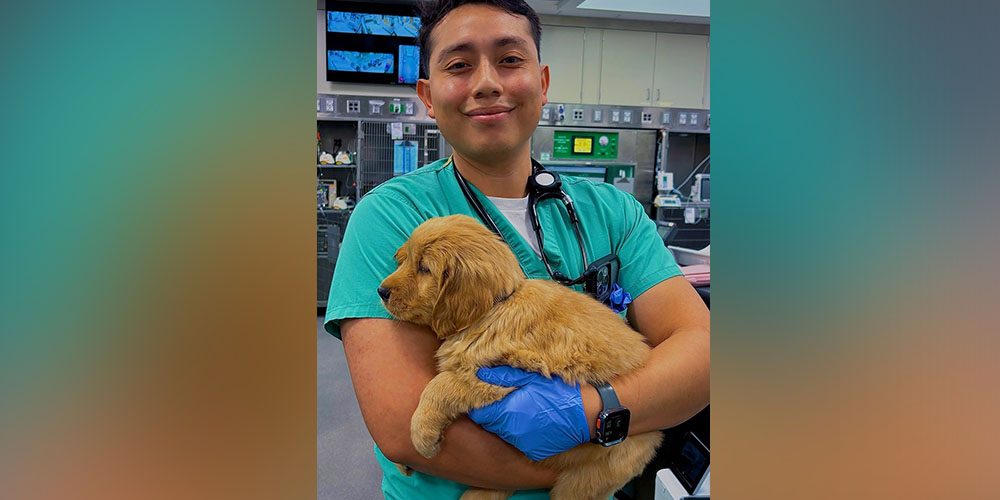
John Nugra, DVM ’24
John Nugra, DVM ’24
Matched: Dermatology residency, Animal Dermatology Group, Tustin, CA
Hometown: Brooklyn, NY
Where are you now? Small animal rotating internship, Michigan State University
What was your reaction to learning that you Matched? Matching into residency is a whirlwind of emotions—excitement for the journey ahead, fear of the challenges to come, happiness that all the hard work paid off, and pure relief that the waiting is finally over. It’s a mix of nerves and joy, but most of all, it’s the start of something incredible.
How will the residency further your career goals? My goal is to become a dermatologist who not only provides expert care to pets and educates their owners, but also advances the field through research and mentorship.
Matching into a dermatology residency is an incredible opportunity that will help me grow as a clinician, researcher, and mentor. I am grateful for this next chapter and excited to make a lasting impact on my patients and the veterinary community.
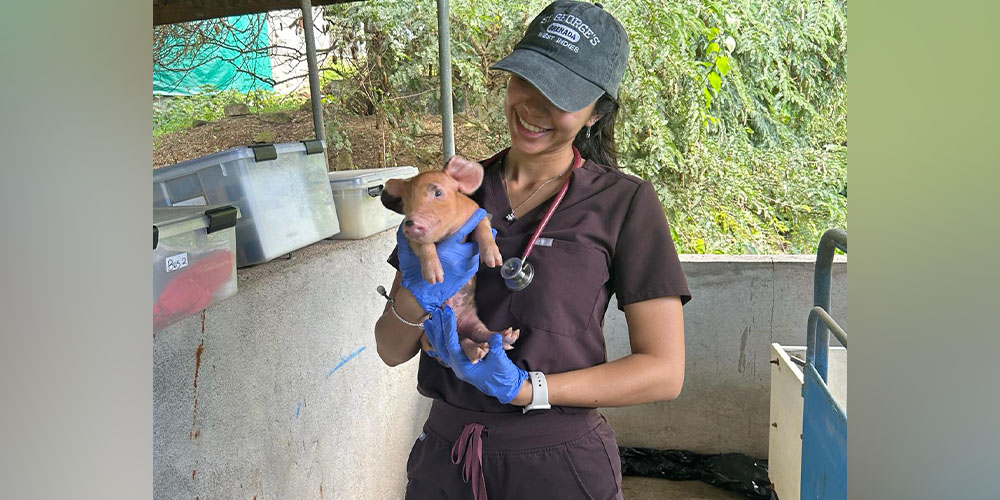
Gabriela Medrano, DVM ’25 (expected)
Gabriela Medrano, DVM ’25 (expected)
Matched: Rotating internships in medicine, surgery, and emergency and critical care, Veterinary Referral Associates, Gaithersburg, MD
Hometown: San Juan, Puerto Rico
Where are you now? Clinical year at Cornell University
What was your reaction to learning that you Matched? I was so relieved and happy to find out that I matched at my first option for a small animal rotating internship.
How will the internship further your career goals? I’m interested in sports medicine and rehabilitation, as well as in internal medicine. This internship has a sports medicine and rehabilitation service with a board-certified veterinarian, an internal medicine service, and offers a strong mentorship as well. I want to explore my interests as I become more comfortable practicing veterinary medicine. This internship is the perfect opportunity for me to do that.
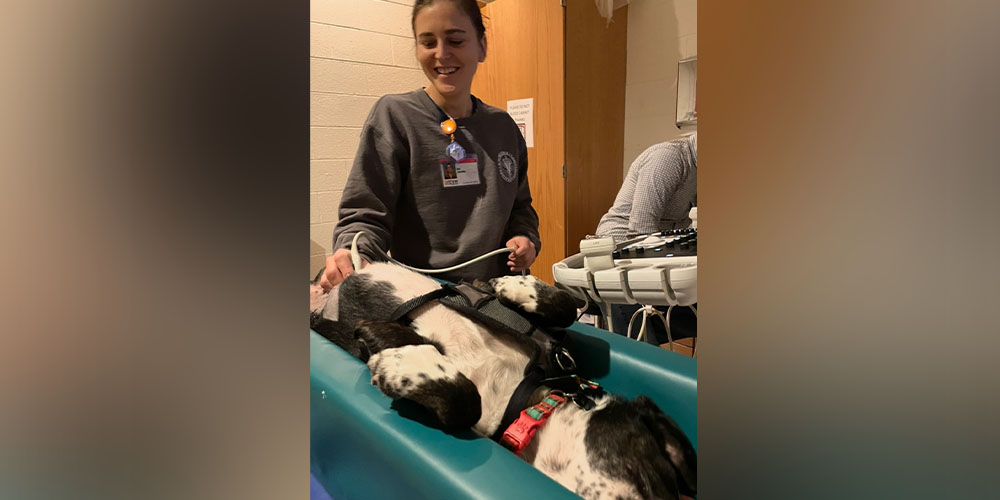
Brianna Jacobs, DVM ’23
Brianna Jacobs, DVM ’23
Matched: Specialty internship in oncology, BluePearl Specialty + Pet Hospital, Franklin, TN
Hometown: Tallahassee, FL
Where are you now? Currently working in general practice
What was your reaction to learning that you Matched? I was absolutely thrilled and relieved to find out that I matched! Oncology is a field I am deeply passionate about, and securing this internship is a significant step in my career.
How does the internship further your career goals? My long-term goal is to become a board-certified veterinary medical oncologist. This internship provides the critical hands-on experience and mentorship necessary to deepen my understanding of oncology and prepare for a residency program in the future.
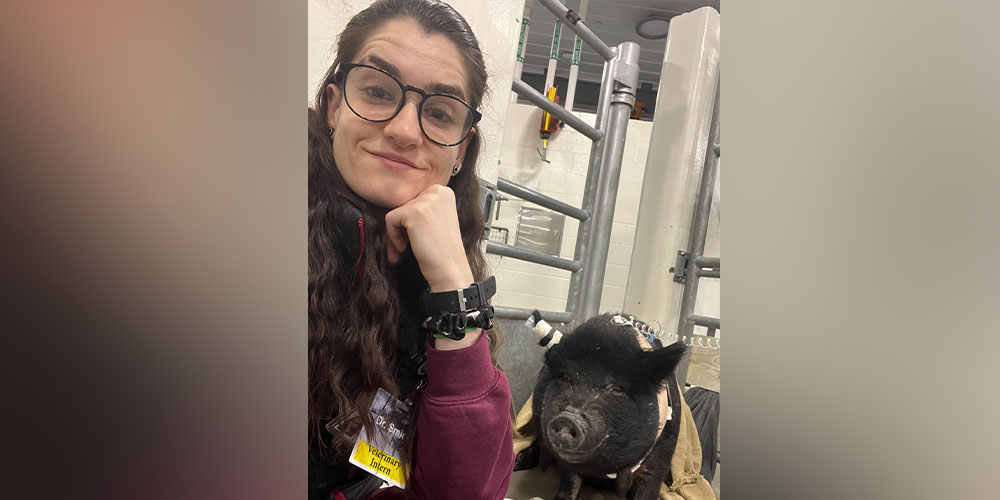
Stephanie Smick, DVM ’24
Stephanie Smick, DVM ’24
Matched: Large animal internal medicine residency, Purdue University
Hometown: Oswego, IL
Where are you now? Finishing my large animal rotating internship at Purdue University
What was your reaction to learning that you Matched? It provided affirmation that I am meant to be a large animal internist and continue the pursuit of advancing the collective veterinary knowledge.
How does the residency further your career goals? I would love to end up in a setting that combines teaching students as well as working within clinics.
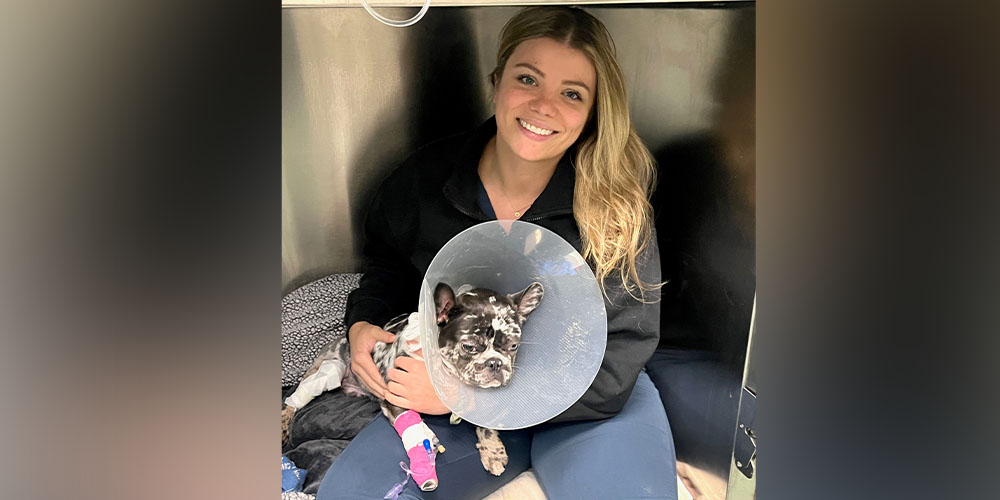
Adriana Kalaska, DVM ’23
Adriana Kalaska, DVM ’23
Matched: Small animal surgery residency, BluePearl Specialty + Pet Hospital Golden Valley, Golden Valley, MN
Hometown: Montréal, Canada
Where are you now? Currently working as a small animal surgery intern at VCA Mississauga Oakville Veterinary Emergency & Specialty Hospital (ON, Canada)
What was your reaction to learning that you Matched? A combination of excitement and relief! Surgery is a very competitive field. Being offered a spot is unbelievably rewarding and validates all of the sacrifices and work that have gone into this process. I’m also very thankful to my mentors, referees, and colleagues who were a major part of my success.
How does the residency further your career goals? This is the final step in becoming a board-certified small animal surgeon with the American College of Veterinary Surgeons.

Emma Wood, DVM ’25 (expected)
Emma Wood, DVM ’25 (expected)
Matched: Small animal rotating internship, Auburn University
Hometown: Alpharetta, GA
Where are you now? Clinical year at University of Tennessee
What was your reaction to learning that you Matched? I was very excited and a little nervous knowing I will be moving to a new place. I was also proud of myself for taking the risk to set myself for the best future.
How does the internship further your career goals? I want to pursue a surgical residency. Completing a rotating internship will help me to become a better, more well-rounded doctor before pursuing surgery.
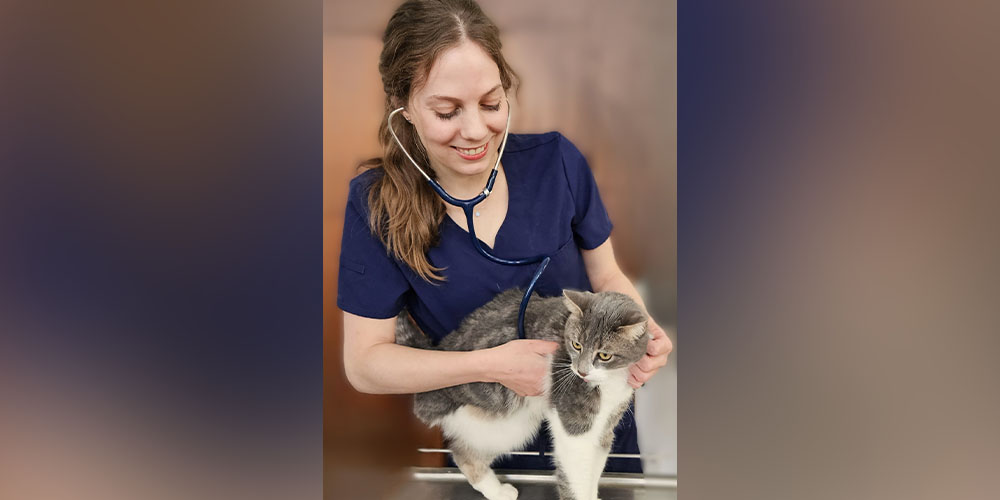
Lauren Abrams, DVM ’25
Lauren Abrams, DVM ’25
Matched: Shelter medicine specialty internship, Cornell University
Hometown: Montreal, Canada
Where are you now? I am currently working at the Montreal SPCA as a shelter veterinarian.
What was your reaction to learning that you Matched? I was stunned when I first saw I had matched with my dream program. But once reality sank in, pure excitement took over. This specific program has been my ultimate goal since before I even started vet school and I have dedicated my life to this field of veterinary medicine. Seeing that match notification felt like watching all those long hours of hard work finally come together exactly as I’d hoped.
How does the internship further your career goals? I’ve been drawn to shelter medicine since childhood. What drives me is expanding access to veterinary care for underserved communities and their animals. This internship is the perfect stepping stone, as it will develop my expertise across the full spectrum of shelter medicine: surgical skills, forensic investigation, population management strategies, infectious disease control, and community outreach programs.
These comprehensive experiences will equip me to make a meaningful impact in shelters where resources are limited but the need is tremendous. My ultimate goal is to combine clinical excellence with innovative approaches to help shelters maximize their impact on animal welfare and public health.
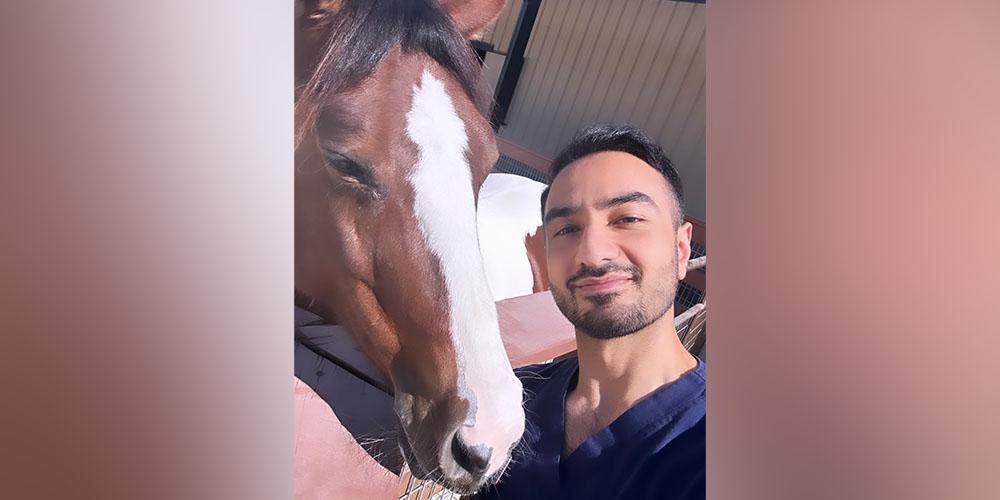
Arvin Azizi, DVM ’25
Arvin Azizi, DVM ’25
Matched: Small animal rotating internship, Los Angeles Animal Specialty, Emergency & Rehabilitation
Hometown: Los Angeles, CA
Where are you now? Texas A&M College of Veterinary Medicine & Biomedical Sciences
What was your reaction to learning that you Matched? Ecstatic! They are up there with the most applied-to programs so for them to rank me as their number one is an awesome feeling.
How does the internship further your career goals? I am en route to becoming a veterinary anesthesiologist. Managing pain, enhancing comfort, and optimizing success of a surgery and its subsequent post-operative recovery are the cornerstones to becoming competent in anesthesiology. My internship will provide me with a heavy caseload and autonomy over my cases, thus challenging me to cultivate those competencies.
– Laurie Chartorynsky
Related Reading
- SVM 25th Anniversary Recognized at VetBolus 2024 Conference
- How an SVM Grad Turned Her Love for Horses into a Career
- Top 5 Impactful School of Veterinary Medicine Stories of 2024
